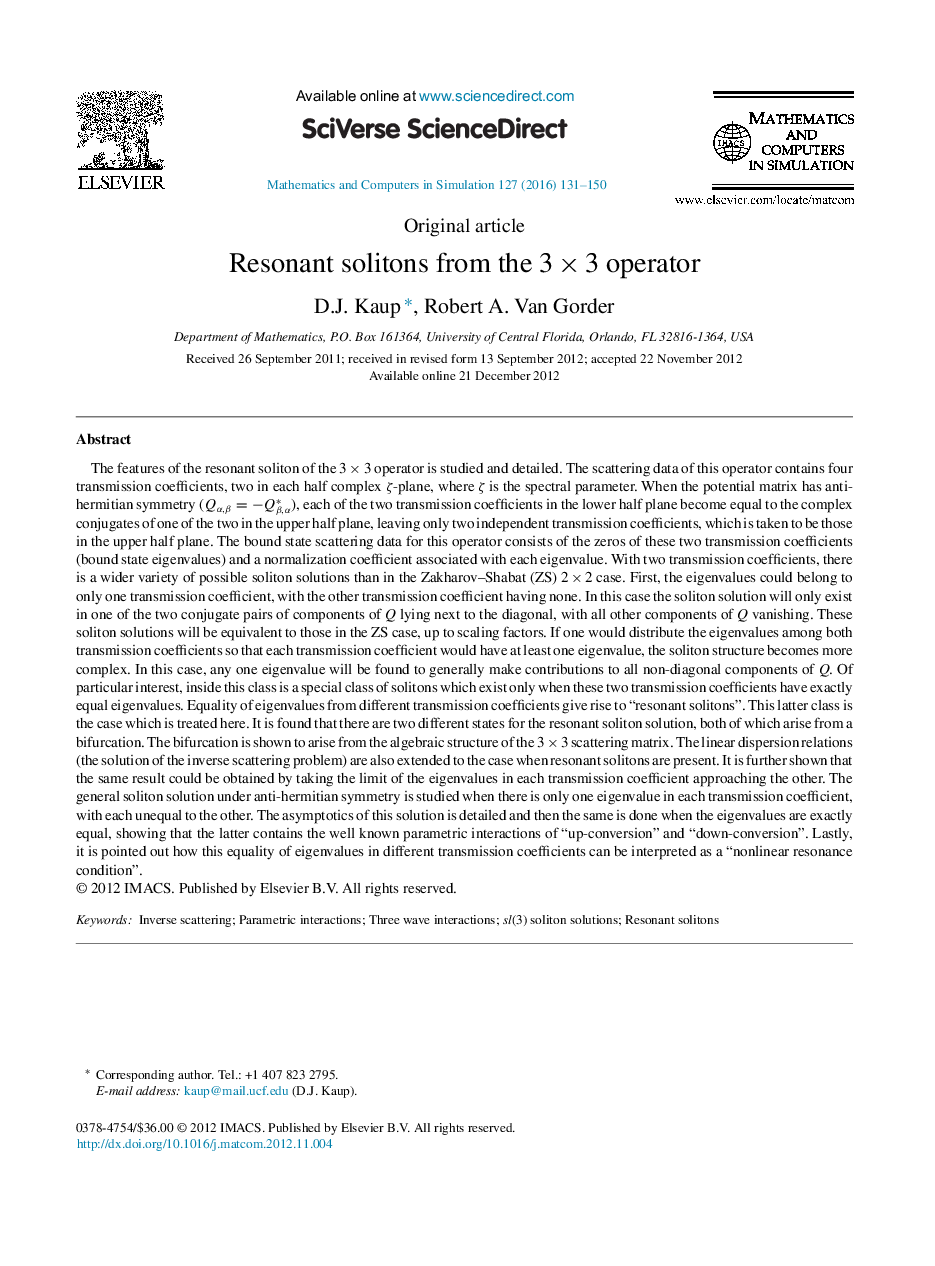| کد مقاله | کد نشریه | سال انتشار | مقاله انگلیسی | نسخه تمام متن |
|---|---|---|---|---|
| 1139150 | 1489387 | 2016 | 20 صفحه PDF | دانلود رایگان |

The features of the resonant soliton of the 3 × 3 operator is studied and detailed. The scattering data of this operator contains four transmission coefficients, two in each half complex ζ-plane, where ζ is the spectral parameter. When the potential matrix has anti-hermitian symmetry (Qα,β=−Qβ,α*), each of the two transmission coefficients in the lower half plane become equal to the complex conjugates of one of the two in the upper half plane, leaving only two independent transmission coefficients, which is taken to be those in the upper half plane. The bound state scattering data for this operator consists of the zeros of these two transmission coefficients (bound state eigenvalues) and a normalization coefficient associated with each eigenvalue. With two transmission coefficients, there is a wider variety of possible soliton solutions than in the Zakharov–Shabat (ZS) 2 × 2 case. First, the eigenvalues could belong to only one transmission coefficient, with the other transmission coefficient having none. In this case the soliton solution will only exist in one of the two conjugate pairs of components of Q lying next to the diagonal, with all other components of Q vanishing. These soliton solutions will be equivalent to those in the ZS case, up to scaling factors. If one would distribute the eigenvalues among both transmission coefficients so that each transmission coefficient would have at least one eigenvalue, the soliton structure becomes more complex. In this case, any one eigenvalue will be found to generally make contributions to all non-diagonal components of Q. Of particular interest, inside this class is a special class of solitons which exist only when these two transmission coefficients have exactly equal eigenvalues. Equality of eigenvalues from different transmission coefficients give rise to “resonant solitons”. This latter class is the case which is treated here. It is found that there are two different states for the resonant soliton solution, both of which arise from a bifurcation. The bifurcation is shown to arise from the algebraic structure of the 3 × 3 scattering matrix. The linear dispersion relations (the solution of the inverse scattering problem) are also extended to the case when resonant solitons are present. It is further shown that the same result could be obtained by taking the limit of the eigenvalues in each transmission coefficient approaching the other. The general soliton solution under anti-hermitian symmetry is studied when there is only one eigenvalue in each transmission coefficient, with each unequal to the other. The asymptotics of this solution is detailed and then the same is done when the eigenvalues are exactly equal, showing that the latter contains the well known parametric interactions of “up-conversion” and “down-conversion”. Lastly, it is pointed out how this equality of eigenvalues in different transmission coefficients can be interpreted as a “nonlinear resonance condition”.
► The theory of resonant solitons in Zakharov–Manakov system.
► Two different branches of solutions are found, arising from a bifurcation.
► The extended set of scattering data for resonant solitons is given.
► Soliton and resonant soliton solutions are presented and discussed in detail.
► Conditions for obtaining total conversion in the 3WRI are given.
Journal: Mathematics and Computers in Simulation - Volume 127, September 2016, Pages 131–150